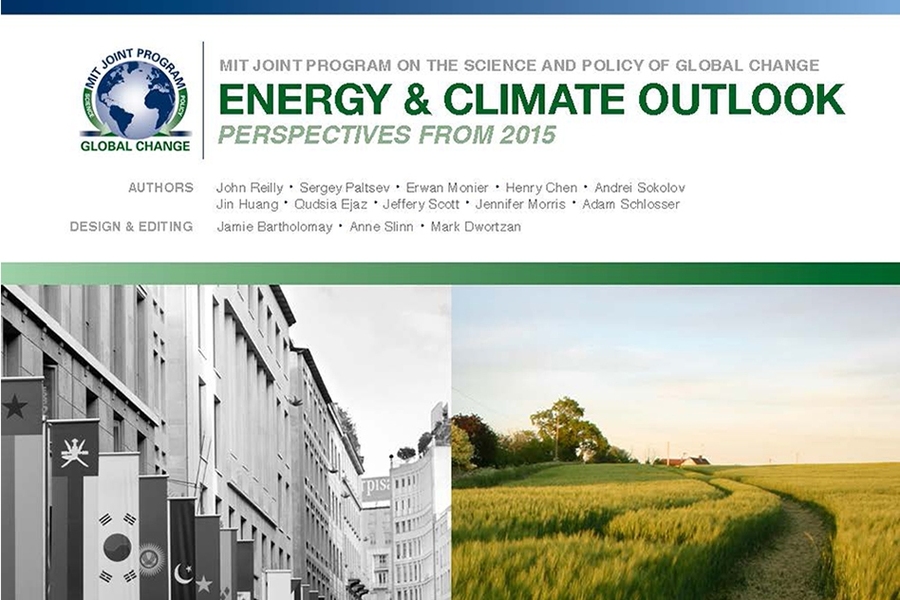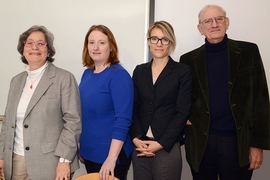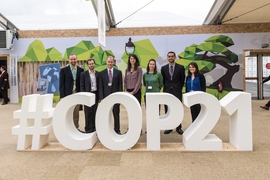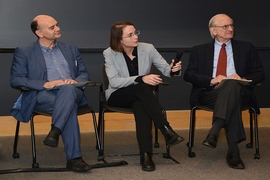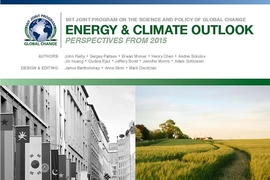From the run-up to the Paris climate talks (COP21) this month to the weeks following their conclusion, the press has repeatedly probed the question of whether the collective climate pledges of the 195 signatories would go far enough. Would their commitments, along with preexisting policies, reduce greenhouse gas emissions enough to keep the rise in global temperature since preindustrial times below the 2 degrees Celsius threshold identified by the United Nations Framework Convention on Climate Change (UNFCCC) as necessary to avoid the most serious impacts of climate change?
In October, the MIT Joint Program on the Science and Policy of Global Change weighed in on the matter, releasing its signature publication, the "2015 Energy and Climate Outlook." Extending both previously announced Paris climate pledges of the largest emitters and commitments made in earlier climate summits, the "Outlook" projected that the average global temperature should rise 3.1-5.2 degrees Celsius above pre-industrial levels by 2100. According to the study, the net effect of the Paris pledges, above and beyond what had been already pledged through 2020, would be a reduction of 0.2 C of warming by that time.
That number has been misinterpreted in several news stories and blog posts, but a new article in New York magazine corrects the record.
“Since the 'Outlook' was released, several reporters and bloggers have quoted the 0.2 C figure as evidence of the failure of COP21, and emphasized how our study shows the talks resulting in far less progress in stabilizing the climate than other analyses,” says John Reilly, co-director of the Joint Program. “The New York magazine article avoids this error by including a UNFCCC graph showing that we are actually in the middle of the pack in terms of the positive effects of the Paris pledges through 2030, and by pointing out that MIT makes a very different assumption from most studies in projecting the climate’s trajectory after 2030.”
Elucidating on the latter point, the New York article explains why the MIT study projects that COP21 will produce only 0.2 C in reduced warming by 2100:
“So why does MIT find such a small difference? Because, unlike most studies, it assumes that after the current round of pledges is carried out, no further action will take place. Other studies assume that most countries will continue to transition to green energy sources. So, while the MIT study yields similar results to others over the next 15 years, it diverges dramatically over the 70 years that follow. That’s the main reason why it gets such a small effect by 2100.”
“Apparently other groups, when spinning this forward to get temperature impacts, imagine the policy snowball keeps rolling and gets bigger and bigger post 2030, and so get a much lower temperature increase,” says Reilly. “That probably does put an overly optimistic spin on COP21, but the differences are based on assumptions after 2030, which the agreement doesn't really cover.” Reilly adds, “The COP21 pledges represent real progress, but clearly they are not enough by themselves, and more work needs to be done in subsequent agreements.”
The New York magazine article comes to the same conclusion — one that was right there all along in the "Outlook": COP21 does, in fact, represent progress in bending the curve of emissions growth, but will need to be followed up with far more ambitious commitments to ensure success by the end of the century.
